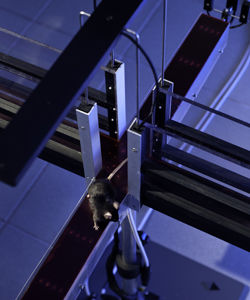This website uses cookies to ensure you get the best experience on our website. Learn more
This test is used to evaluate exploratory drive, reactivity to novelty and emotionality. Habituation to the open field, which is a form of non-associative learning, is also measured.
4-8 automated openfield arenas (Panlab, Barcelona, Spain).
10 mice per group are recommended for reliable data analysis.
The light-dark test allow an evaluation of emotional responses of animals in a highly illuminated situation. Mice will normally show a preference for the dark compartment, but they also exhibit some incursions into the lit compartment. Aberrant behavior may indicate changes in anxiety.
4 automated light/dark boxes (Imetronic, Pessac, France).
10 mice per group are recommended for reliable data analysis.
The elevated plus maze test allows an evaluation of anxiety for height. Animals are confronted to a choice between threatening environment, an exposed runway elevated from the floor, and relatively safe enclosure. An anxious animal will normally choose to spend time in the closed arms and rarely venture out onto the open arms.
An automated elevated maze device (Imetronic, Pessac, France).
10 mice per group are recommended for reliable data analysis.
Social recognition test evaluates the preference of a mouse for a congener as compared to an object placed in an opposite compartment. This test also used for evaluation of social memory by measuring exploration of a novel congener as compared to a familiar one. Social behavior is altered in several diseases such as autism and mental retardation.
